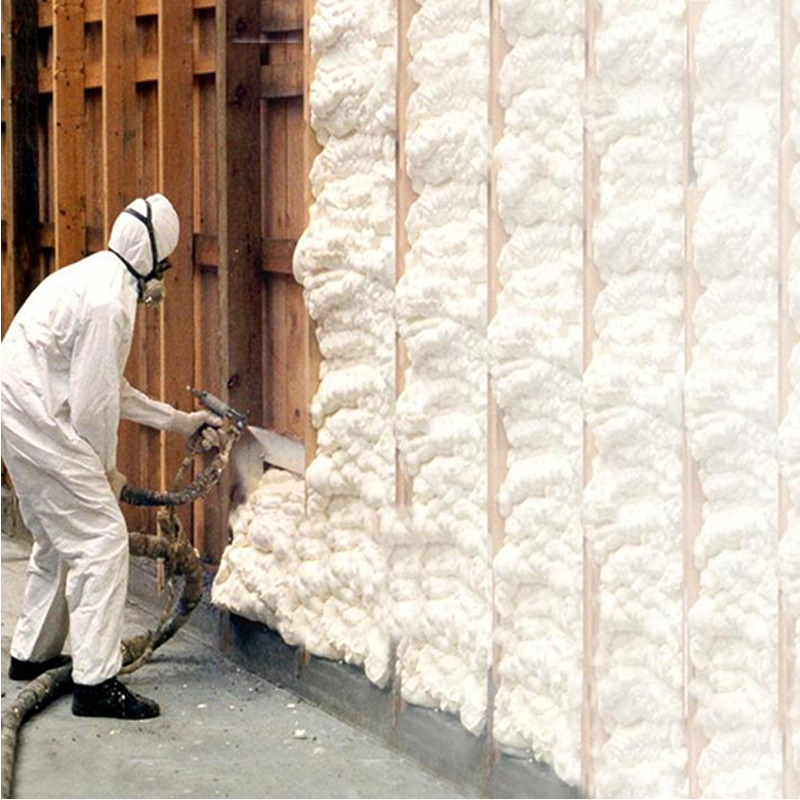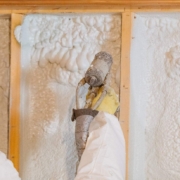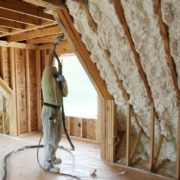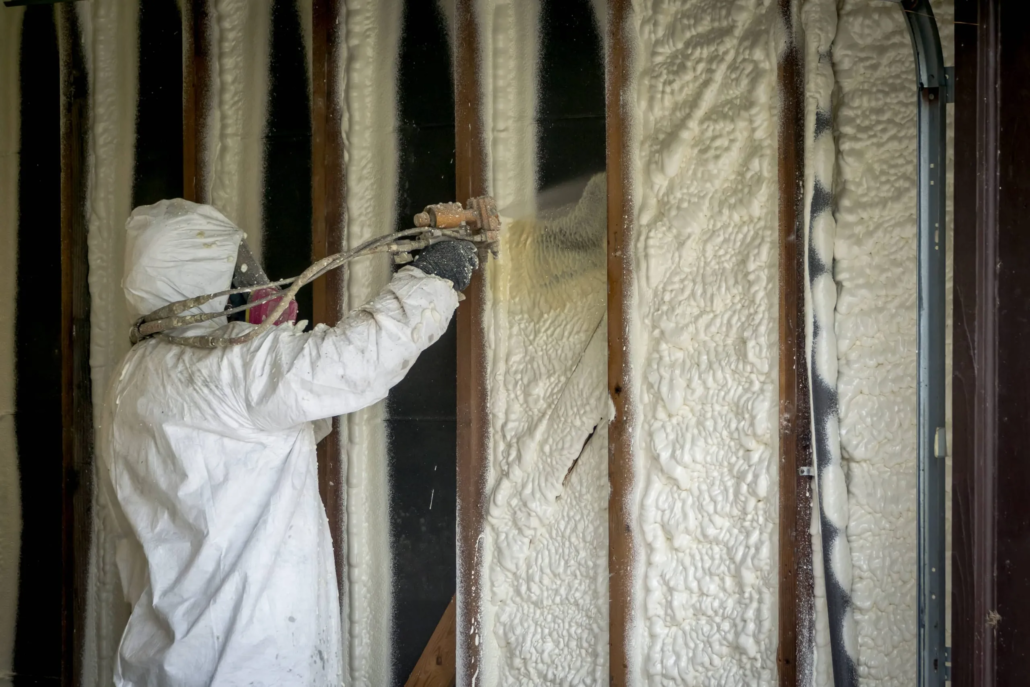7 Signs You’ve Hired the Right Spray Foam Insulation Contractor
Hiring the right spray foam insulation contractor in Renton can make or break your project’s energy efficiency. According to the U.S. Department of Energy, up to 40% of energy loss in buildings occurs due to air leaks. A professional insulation job can cut energy bills by as much as 20% and significantly reduce indoor temperature swings.
In Renton, WA, where damp conditions and seasonal shifts impact indoor comfort, selecting the right insulation provider matters more than most realize. This article outlines seven signs you’ve chosen a qualified spray foam insulation contractor who understands the local climate, uses advanced techniques, and puts long-term building performance first.
1. They Are Licensed, Insured, and Certified
A legitimate spray foam insulation contractor will be licensed to work in Washington State, carry active liability insurance, and hold up-to-date certifications.
Valid Licensing and Insurance Documentation
Certified insulation professionals always provide proof of state-required licenses and active liability coverage. This protects you in case of accidents or project complications.
Recognized Certifications
Look for training credentials from industry organizations such as SPFA (Spray Polyurethane Foam Alliance) or ABAA (Air Barrier Association of America). These validate that the installer meets current application standards.
2. They Conduct an On-Site Evaluation First
Reputable professionals do not offer flat quotes over the phone. They assess the structure in person and take time to understand your insulation goals.
Structural Review and Moisture Checks
During a walk-through, experienced insulation professionals evaluate framing, check for existing vapor issues, and consider access points to hard-to-reach areas.
Customized Application Strategy
The right spray foam insulation contractor explains how insulation will be applied in attics, walls, crawlspaces, and basements—adjusting material choices based on your home’s layout and Renton’s damp winters.
3. They Offer Clear Scope, Timing, and Warranty Terms
The best insulation teams in Renton don’t just quote numbers. They explain what work will be done, how long it will take, and what protection you receive.
Written Work Agreement
Expect a transparent project scope that outlines foam type, application method, cleanup procedures, and post-install inspection steps.
Warranty for Labor and Materials
Trusted insulation pros include warranties for both workmanship and the foam product itself. This ensures support if future issues arise.

4. They Use High-Quality, Closed- and Open-Cell Foam
Experienced installers offer multiple insulation options based on building type, performance goals, and budget.
Closed-Cell vs. Open-Cell Foam Comparison
| Feature | Closed-Cell Foam | Open-Cell Foam |
|---|---|---|
| R-Value (per inch) | Higher (approx. 6.5) | Lower (approx. 3.6) |
| Moisture Resistance | Strong | Limited |
| Sound Dampening | Moderate | Excellent |
| Cost | Higher | Lower |
| Best Use | Basements, exteriors | Attics, interior walls |
Proper Material Handling
High-quality insulation experts verify manufacturer batch codes and follow foam mixing and curing standards. This improves long-term thermal performance and air sealing.
5. They Prioritize Safety and Ventilation During Application
Foam installation involves chemical mixing that requires controlled environments. The right contractor takes protective steps for your household and their team.
Occupant Safety Protocols
Professionals use containment measures, advise temporary home vacating if needed, and ventilate work zones with exhaust fans.
Installer PPE and Jobsite Compliance
Look for proper use of respirators, chemical suits, and signage that marks restricted areas.
6. They Demonstrate Local Knowledge and Climate Adaptation
Not all insulation behaves the same across regions. Renton’s rainy season and cool coastal air impact foam performance.
Familiarity with Renton Building Codes
Your local insulation contractor should understand King County permitting requirements and the insulation R-values mandated for attics, crawlspaces, and walls.
Climate-Specific Recommendations
In Renton, insulation professionals often recommend closed-cell foam in basements or crawlspaces to limit moisture migration. In drier spaces like second-floor walls, open-cell can reduce air transfer without trapping water.
7. Past Clients Validate Their Work
Strong reviews and real-world references set top insulation providers apart.
Verified Online Reviews
Google, Yelp, and BBB listings should show consistent praise for the contractor’s work quality, communication, and professionalism.
Before-and-After Photos or Case Studies
Professional foam advisors often maintain project galleries showing how insulation improved energy efficiency or reduced condensation problems for homes and commercial buildings in Renton.
Spotting the Right Contractor
- Licensed, insured, and certified insulation personnel
- Offers in-person inspection before quoting
- Provides written scope, warranty, and timeline
- Uses verified closed- or open-cell foam
- Follows safety protocols and PPE standards
- Understands Renton’s code and climate
- Has strong local reviews and documented results

FAQs
How do I confirm if an insulation contractor is certified? Request proof of certification from organizations like SPFA or ABAA. These confirm training in proper foam installation methods and safety standards.
What foam type is better for Renton’s weather? Closed-cell foam is often used for moisture-prone areas like crawlspaces. Open-cell works well in dry, interior areas where air movement needs to be controlled.
Do spray foam jobs require ventilation? Yes. Professional insulation teams in Renton set up fans and use PPE to control off-gassing during foam curing. Ventilation is critical for occupant safety.
How long does spray foam last? When installed correctly by certified experts, spray foam insulation can last over 20 years with minimal maintenance.
Can I stay in my house during the install? In most cases, occupants should vacate the area for 24 hours post-install. The insulation team will provide detailed safety guidance based on project size.
Ready to Achieve Energy-Efficient Indoor Performance?
Insulation plays a major role in keeping homes and commercial buildings in Renton energy-efficient and comfortable year-round. A reliable spray foam insulation contractor can help improve indoor air quality, lower energy costs, and extend HVAC system life.
Cascadia Spray Foam of Seattle brings expertise to performance-focused insulation projects across the Renton area. Their certified teams handle both residential and commercial applications with attention to building science and moisture management.
Call (425) 386-3500 or email info@cascadiasprayfoam.com to get started.
Reviewer: Olivia Thompson has spent 10 years working in spray foam insulation, helping companies grow their visibility. She reviewed this article and provided valuable suggestions on how to better align the content with the needs and expectations of customers, ensuring it resonates with the target audience.




